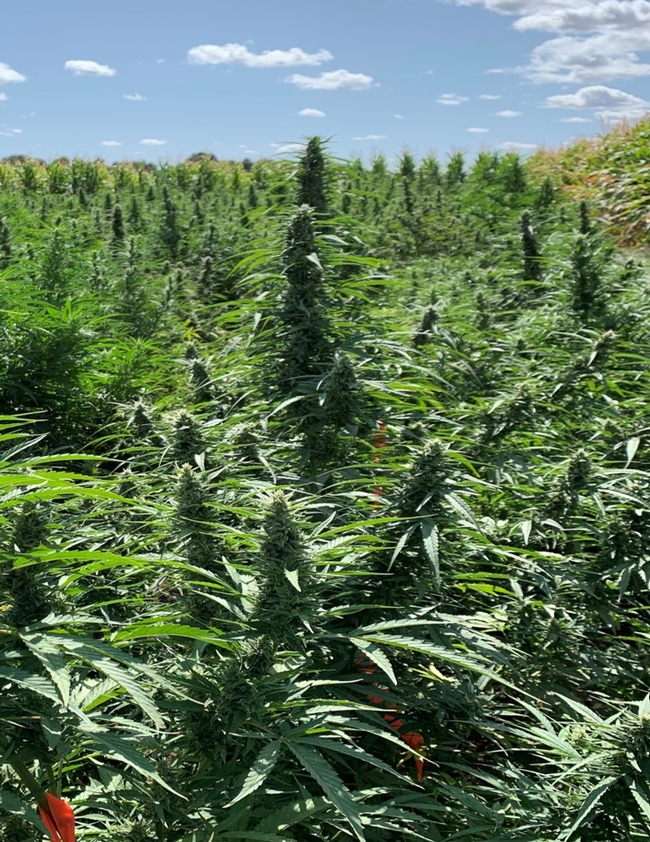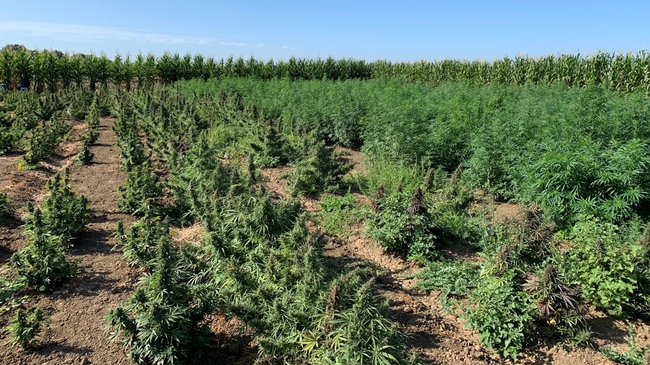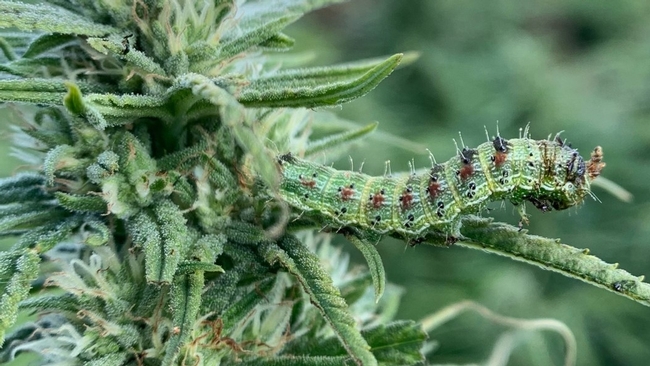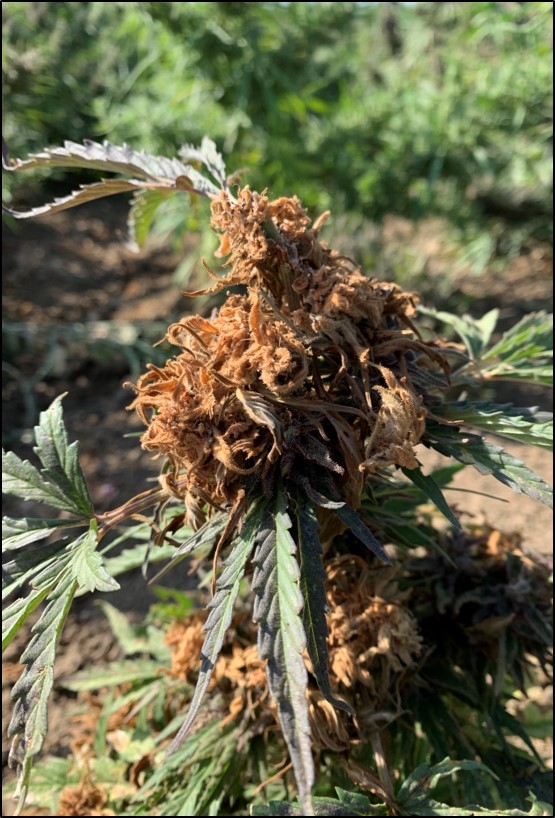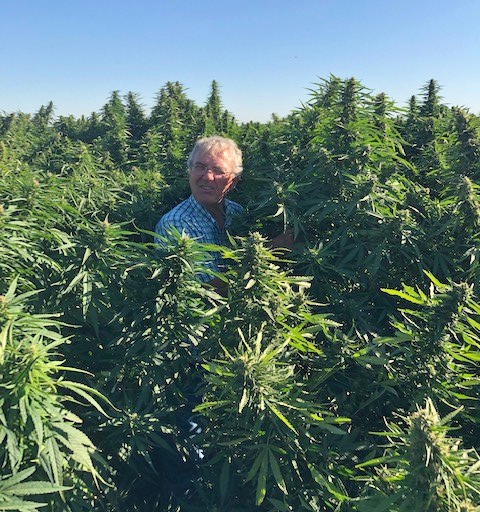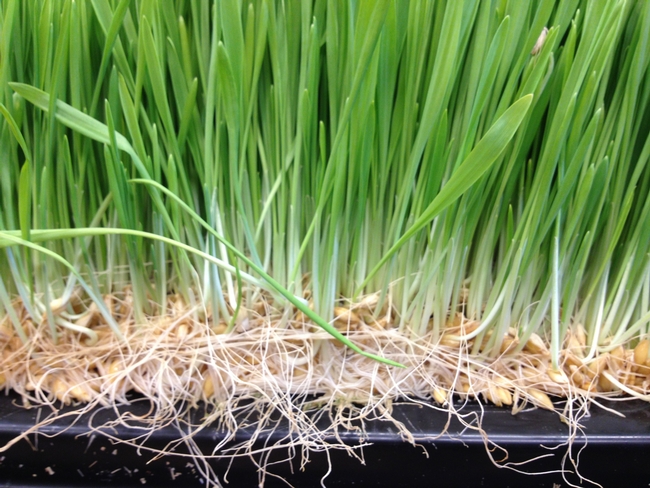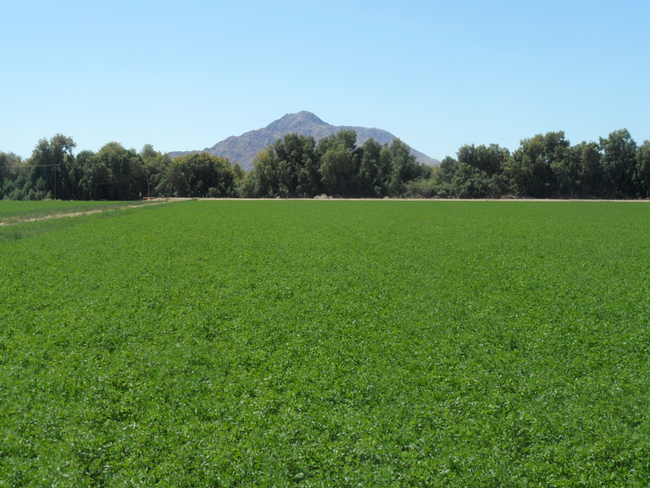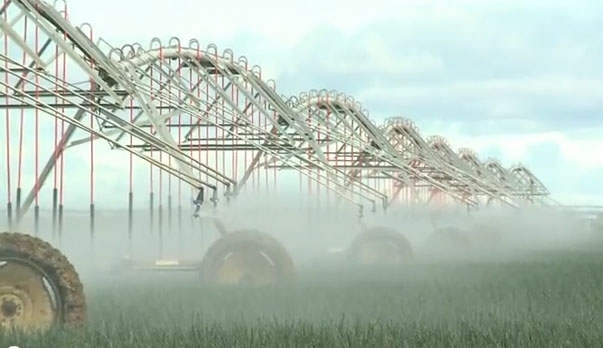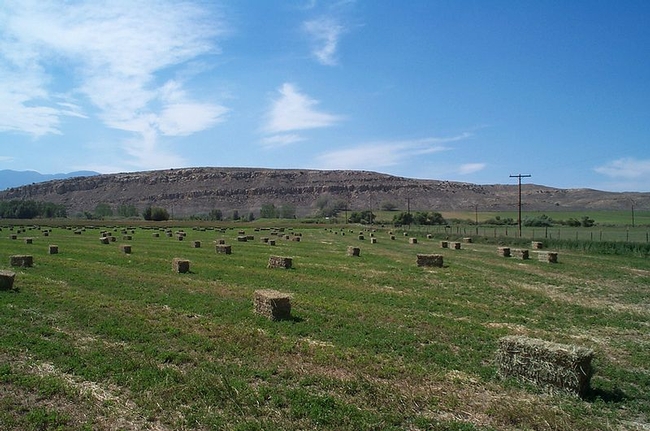Posts Tagged: Dan Putnam
Early UC hemp research already yielding results
For the first time ever, UC Agriculture and Natural Resources (UC ANR) researchers harvested an industrial hemp crop at one of its nine research and extension centers this fall.
“It's an interesting crop,” said UC Cooperative Extension specialist Bob Hutmacher. “There is a tremendous amount of research that can be done to understand its growth and best cultural practices, optimal planting dates either by seed or transplants, irrigation and fertilization management, and, particularly, to address pest and disease management.”
The research project is part of a two-location study, one at the UC West Side Research and Extension Center (WSREC) in Five Points, in western Fresno County, and an identical companion study at the UC Davis farm headed by UC Cooperative Extension specialist Dan Putnam and UC Davis professor and plant breeder Charles Brummer. These initial studies included a planting density by variety trial and a breeding observation block representing a wide range of genetics. The research was launched mid-summer this year after the 2018 Farm Bill declared that hemp should no longer be considered a controlled substance, but rather an agricultural commodity.
Industrial hemp can be produced for grain and fiber, however, many growers currently consider the most profitable component of the crop to be cannabidiol, or CBD, and related compounds. CBD is valued for its purported health benefits. It is said to reduce inflammation, pain, nausea, depression and anxiety, among other conditions.
Hutmacher said he and colleagues around the state are interested in learning about industrial hemp production opportunities, and feel there is a place for UC ANR research to support the fledgling industry. Already, there are some observations coming out of these small trials.
“Some people believe that hemp is a pest- and disease-free plant. That's not what we found,” Hutmacher said. “In the absence of suitable measures for control, corn ear worms seemed to thrive in hemp, and did an astounding amount of damage to cultivars in our small plots.”
The scientists were forced to use a pesticide to control the pest and reduce damage to developing buds. The hemp produced in the trial will be destroyed after harvest data has been collected. The experience with corn ear worm and other pest issues demonstrate that pest control will require significant study, particularly if a goal is to produce the crop organically.
“Markets for some industrial hemp products may require low pesticide residues. If hemp is produced organically, some preliminary observations this year suggest farmers will have to put a big effort into pest and disease control,” he said.
Plant breeding can be another area of UC research. Hemp's natural genetic variations produce plants that vary widely in growth habit, size, response to day length, and time to maturity. There are hemp cultivars that mature when the plant is 18 inches tall and others that shoot up 12 feet high at maturity. Hemp grown for CBD production from seed or as transplants can vary greatly in size and other characteristics, such as amount of branching and the number of flower structures per plant. Multiple plant and production system factors also will influence options for mechanical versus hand harvesting.
Another breeding concern for growers is producing a crop with economic levels of CBD or other compounds of commercial interest, while staying within regulatory limits for THC (tetrahydrocannabinol), the psychoactive compound found in marijuana, a related plant. According to the California Department of Food and Agriculture, an industrial hemp crop grown in the state may have no more than 0.3% THC when plant samples are analyzed.
“This will be a challenge for growers. You don't want to risk too high a THC level,” Hutmacher said. “Farmers must test to make sure THC is at a level to meet regulations. If it's too high, CDFA regulations would require the crop be destroyed.”
Working with UC breeders, integrated pest management scientists, agronomists, irrigation specialists and agricultural engineers, there should be good opportunities to finesse hemp production at UC ANR's network of research and extension center system across California.
Research center locations stretch from Holtville, in the low desert at the California-Mexico border, to Tulelake, just south of the Oregon border. Other centers ideal to answer hemp research questions include the UC Davis campus, the Hopland REC in Mendocino County, the Hansen REC in Ventura County, and the South Coast REC in Orange County.
UC ANR plans to expand its hemp research in 2020. For more information, contact Bob Hutmacher at (559) 260-8957 or rbhutmacher@ucdavis.edu.
Madera farmer says feeding sprouted grain to sheep improves milk quality
A Madera farmer is sprouting barley hydroponically inside shipping containers on his farm to produce feed for his sheep, reported Ezra David Romero on Valley Public Radio.
“I think that's a big advantage if you don't have a lot of land,” the farmer said. “You can produce a tremendous amount of feed in a very, very small area with a very little amount of water.”
However, UC Cooperative Extension alfalfa specialist Dan Putnam noted in the story that the system may not pencil out.
"If you really apply a little bit of economics to it and animal nutrition to it, it doesn't appear quite as promising as one might think," Putnam said.
There is no question that animals find the sprouted barely delicious. Online videos show cattle and horses "gobbling up sprouted grain like a vegetarian at a salad bar," Putnam wrote in a 2013 blog post that asked Does hydroponic forage production make sense? Things are not always as they seem. Animal ration calculations are based on dry matter since water is provided separately.
"A feed with 90 percent water (such as sprouted grain) has considerably less 'feed value' than something with only 5 percent water (such as the grain itself), on a pound for pound basis," Putnam's blog post says.
Feeding sheep sprouted barley makes sense to Mario Daccarett, the owner of the Golden Valley Farm. He said cheese made from his sheep's creamy milk is sold in places like Whole Foods.
"They have our cheese there and they tell me that our Golden Ewe cheese is the best for grilled cheese sandwich ever, and they have over 500 different varieties of cheese there," Daccarett said.
The farmer feeds his sheep one part oats and hay and one part sprouted barley.
“You do the math and you say, 'Well, yeah, it might not work,' but once we started doing it we found out that sheep tend to eat less, more nutrition, more enzymes,” Daccarett said. “So they become more efficient.”
Drip irrigation in alfalfa cuts water use, but isn't for everybody
The drought is forcing farmers to reexamine the way they water their crops, but converting to drip irrigation in alfalfa is unlikely to be widely implemented, reported David Wagner on KPBS Radio News.
The drip irrigation system conserves water - almost by half, said farmer Jack Cato - but is expensive and requires regular maintenance. After six years, the drip system is yet to pay for itself.
"Drip irrigation is not the answer for everything," said Khaled Bali, irrigation advisor with UC Agriculture and Natural Resources (UC ANR). "I would not recommend switching every acre in the Imperial Valley to drip irrigation."
Cato added that new drip irrigation users face a steep learning curve.
"Whatever farm starts doing this, he needs to take baby steps," Cato said. "It's not something you learn overnight, or in a book. You have to study your fields daily."
For more on water use and alfalfa, see Why alfalfa is the best crop to have in the drought by Daniel Putnam, UC ANR Cooperative Extension specialist based at UC Davis, in the Alfalfa & Forage Blog.
UC scientists helping farmers reduce water needs
Rain in December raised hopes for an end to the California drought, but storms have stayed away since the New Year began. January 2015 is shaping up to be the driest January since officials began keeping records 137 years ago, according to the National Weather Service.
California's continuing water crisis is leading to decreased and more variable water supplies for San Joaquin Valley farmers, and the region's forage production sector is being hit particularly hard.
“Corn silage and alfalfa have traditionally used lots of water and current and future water restrictions are forcing many farmers to rethink their forage production strategies,” said Jeff Dahlberg, UC Cooperative Extension specialist. “I know of one dairy that had to cut-off their summer irrigations of alfalfa to get their corn silage done.”
To help the agriculture industry make do with less water, a team of UC researchers began a long-term research project last year by growing alfalfa, sorghum and corn under a state-of-the-art center pivot irrigation system. The system, donated by industry partners, is installed at the UC West Side Research and Extension Center near Five Points. Reinke Inc. donated the center pivot, Senninger Irrigation donated nozzles, and Rain for Rent created the infrastructure that gets water and power to the 16-acre research plot.
“We see tremendous possibilities for overhead irrigation in cotton, alfalfa, corn, onions and wheat production,” said Jeff Mitchell, UC Cooperative Extension specialist and the project lead. “There is also great potential for overhead irrigation in California's $5 billion dairy industry for more efficiently producing feed crops like alfalfa, corn and sorghum.”
All aspects of production – including irrigation system performance, crop growth and development, weed control, water application, and economic viability – are being monitored by researchers from UC Cooperative Extension, Fresno State University and UC Davis, plus farmer cooperators and industry partners.
The primary focus of the study is comparing regular irrigation levels with regulated deficit irrigation, a system in which water is withheld at certain times in crop development in order to minimize crop losses even when water is short.
“By controlling the speed of the pivot and by using special water application nozzles that apply precise and different amounts of water, we will get either full irrigation, three-quarters of the full amount or about half of the full irrigation quantity over the course of the season,” Mitchell said.
The researchers will apply small, precise amounts of water during the vegetative growth stage for sorghum and both immediately before and after monthly harvests and during the mid- to late-summer period for alfalfa when San Joaquin Valley productivity typically is reduced under flood irrigation.
“We expect to produce marketable and economic yields for sorghum using 25 percent less water as has been achieved under pivots in Texas and similar increases in crop water productivity for alfalfa,” Mitchell said. “This work will inform and improve future water management strategies in California.”
Overhead irrigation systems, such as center pivot systems, are the most prevalent form of irrigation nationwide; however, they have not been widely adopted in California to date. Recent technological advances in overhead irrigation – which allows integration of irrigation with global positioning systems (GPS) and management of vast acreage from a computer or smart phone – have boosted farmers' interest in converting from gravity-fed surface irrigation systems, which are still used on 5 million acres of California farmland.
The research is funded in part with a grant from the UC California Institute for Water Resources. In addition to Dahlberg and Mitchell, UC Cooperative Extension alfalfa specialist Dan Putnam and UCCE advisor in Fresno County Dan Munk are collaborators on the project.
An initiative to improve California water quality, quantity and security is part of the UC Division of Agriculture and Natural Resources Strategic Vision 2025.
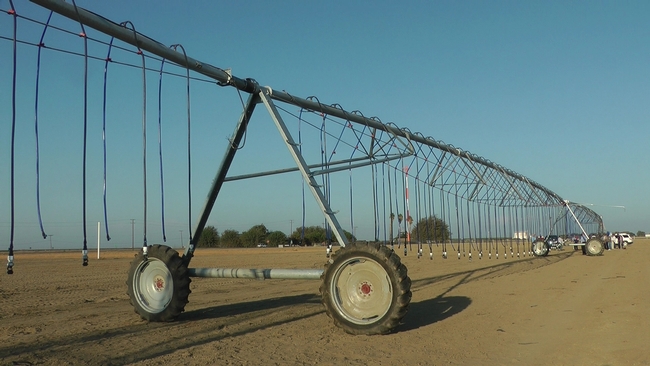
The center pivot system at the UC West Side Research and Extension Center before crops were planted.
New GMO alfalfa holds exciting possibilities, UC expert says
Good news for dairy cows. Science has found a way to produce alfalfa with less lignin, a component of the plant that has no nutritional value. The new alfalfa variety – genetically modified in a way that puts brakes on the lignin-producing gene – was deregulated by USDA in November.
“In general, a reduced lignin trait in alfalfa is very welcome,” said Dan Putnam, UC Cooperative Extension specialist in the Department of Plant Sciences at UC Davis. “The low-lignin trait has some interesting potential implications for dairy cows and other ruminants, as well as for yield, agronomic efficiency, and even energy and water use efficiency.”
The new variety, called KK179, was developed by Forage Genetics International, Monsanto and the Nobel Foundation. Some of the field testing took place at UC Davis and the UC Intermountain Research and Extension Center in Tulelake, Calif.
KK179 differs from most other GMO agricultural crops in that the modification improves the plant quality. Other common modifications, such as glyphosate resistance and addition of a Bt gene, were designed to help with pest control.
Another difference is the source of the modified gene, Putnam said. In glyphosate-resistant (Roundup Ready) alfalfa, for example, the plant was modified by inserting a bacteria gene. Gene segments reducing lignin were derived from alfalfa itself.
Lignin is a fibrous part of cell walls in plants. It strengthens stems, helping the plant grow upright. However, its concentration in alfalfa is high compared to other forages, a drawback for what is considered the premiere forage of dairy cows.
“Farmers often try to cut early to reduce lignin,” Putnam said. “Unfortunately, yields are decreased by early cutting, often by many tons per acre. If growers were able to harvest later and still obtain good quality, yields would improve.”
That leads to the potential energy- and water-conserving aspects of the KK179 alfalfa.
“If growers reduce harvests by one each year and increase yields with no quality penalty, energy use would decline,” Putnam said. “Also, the amount of milk produced per unit of water used to grow the feed may be increased.”
KK179 won't be for everybody, Putnam cautions. Some export markets reject GMO technology, so growers should check whether their markets will accept alfalfa with the low-lignin trait. Another concern is the possibility of gene flow for farmers who grow alfalfa seed for organic production or export.
“Further research and experience by farmers and researchers are needed to fully understand the importance and implications of reduced-lignin alfalfa on farms,” Putnam said, “but this trait holds some very exciting possibilities.”
An initiative to enhance competitive and sustainable food systems is part of the UC Division of Agriculture and Natural Resources Strategic Vision 2025


